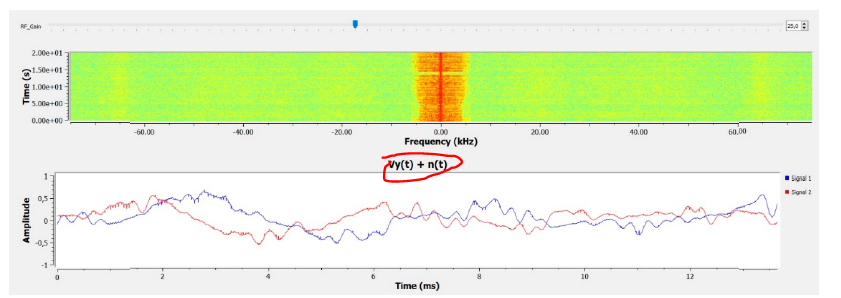Hi everyone, I am having problems when I receive signals using two SDRs (BladeRF - x40), one to transmit and one to receive (I know I can transmit and receive using 1 SDR, but I need the complete schematic transmitter, receiver), the problem is the following, I have a complex signal , with the following values:
in-phase component (i(t)) tx = Ac * x(t)
quadrature component (q(t)) tx = 0
Vy (t) tx = i(t) + j q(t)
TX

I send this signal to the channel and therefore it is received by the SDR receiver.
What I receive in the reception is not similar to what I transmitted, because of a tone appears both in its component in phase and in quadrature, by making q(t) rx /≈ q(t) tx /≈ 0.
RX

For a better compression, I will transmit the following signal x(t) = 0 (equivalent to i(t) tx = 0, q(t) tx = 0), so in theory in reception it would only have noise, but this is not the case.
TX

RX

When I use a single SDR to transmit and receive this does not happen, I don’t know if this is due to some kind of synchronization, but with this problem I can not correctly classify the type of modulation.
BLOCK SDR Transmitter.

BLOCK SDR Receiver.

This is what i am getting (Frecuency Domain) when i am transmitting a message with amplitude = 0 and both SDRs have gain equal to 0
When I increase the gain, that peak increases, in addition another peak appears symmetrical to that one with less amplitude
This does not happen when I transmit and receive with the same sdr,
Could this be due to mismatches between both SDRs?
I need help to know how to make it not transmit and receive that unwanted signal.
Thank you very much in advance!





